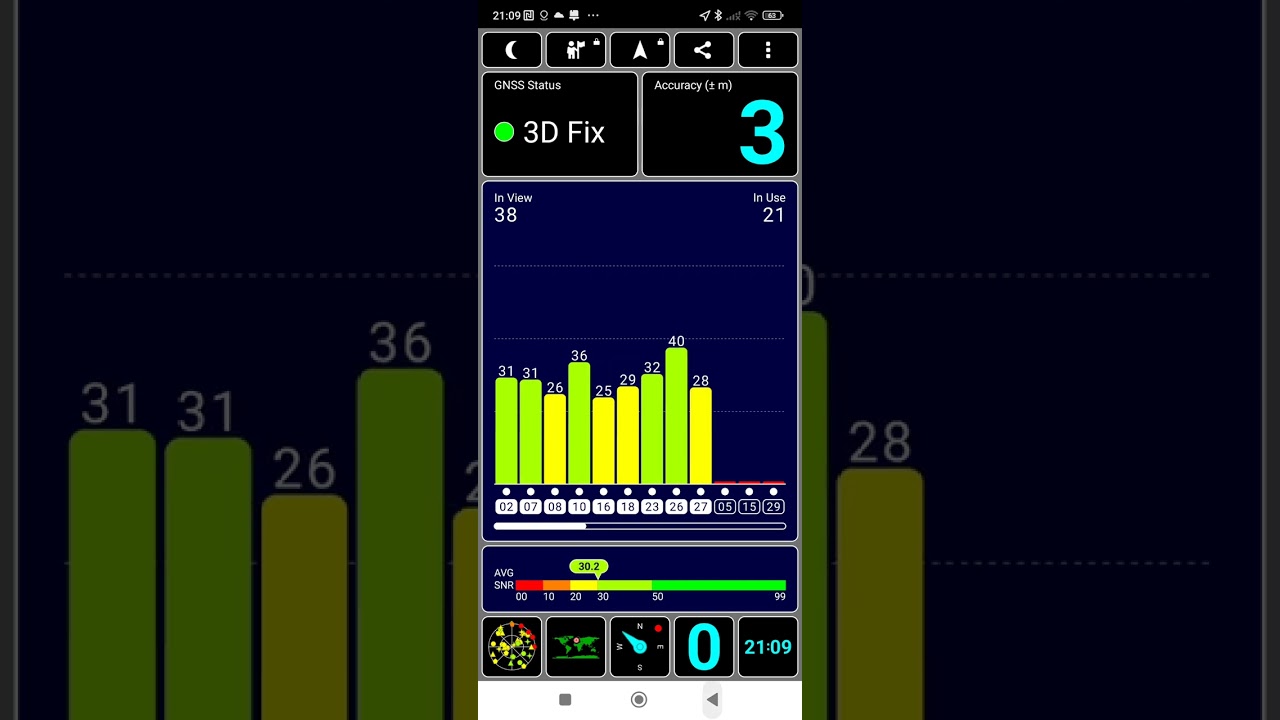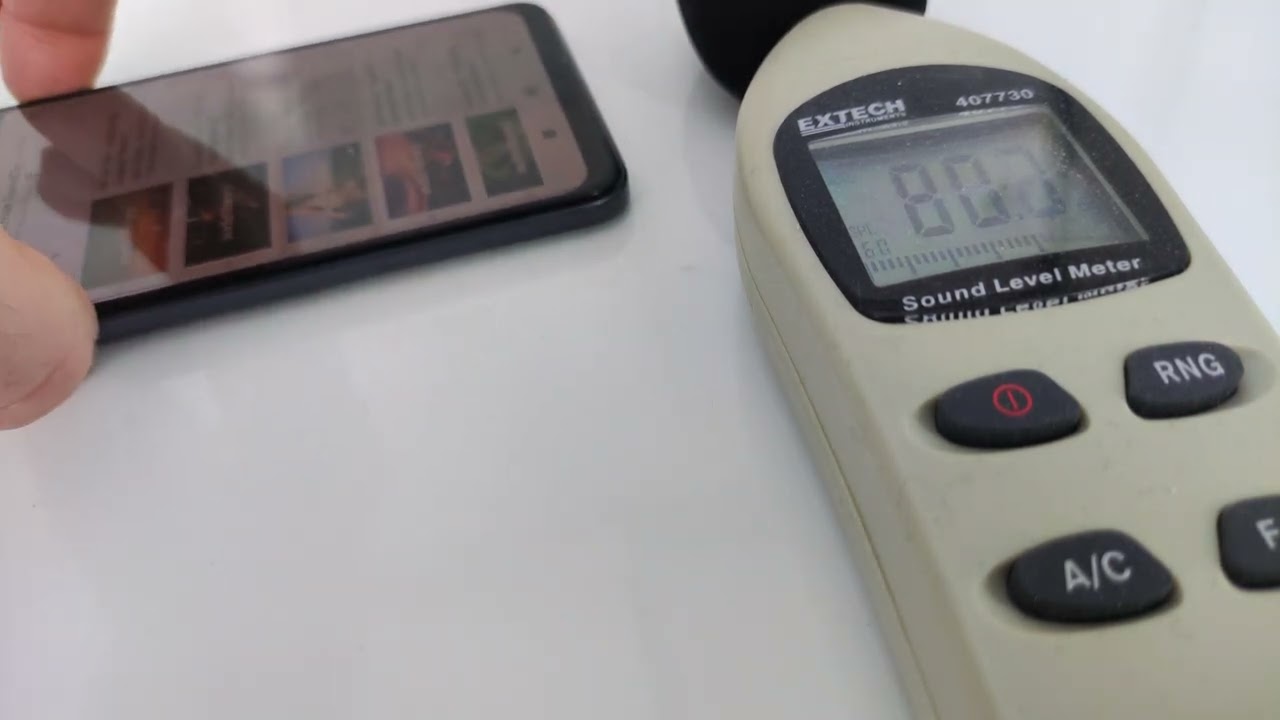Smartphones
POCO X5 5G : test / review
Published on: 06-02-2023 / Modified: 15-04-2023
The Poco family has grown even further with the POCO X5 5G which announces the arrival of the 5th generation. The POCO M5 was released discreetly last year but I think the release of the X5 will be a little more visible and will probably be followed by a POCO F5 if we follow POCO's usual logic. This new POCO takes up features from the previous generation, including a Snapdragon 695 borrowed from the Poco X4 Pro and a few other elements such as the 50 million pixel Samsung sensor. The first visible novelty is its exterior appearance, the POCO X5 is very thin, the back has a uniform surface with a metallic effect with just a rectangular block to house the 3 photo sensors. Let's see together what this new generation of POCO X has in store for us!
Introductory offer
The POCO X5 5G is available on the official website with 2 gifts (a watch and a POCO bracelet) worth 104 €:PO.CO / POCO X5 5G
Test video
Structure of my tests
I test the phones according to a pre-established structure (see below) to provide you with as much information as possible. Unfortunately, this takes a long time. Some tests like network performance tests take several days and for photo tests I sometimes have to wait until the weather is suitable to take pictures in good conditions. I am therefore obliged to publish the tests step by step, so I invite you to come back if the test is not complete at the time of your visit.Price Poco X5 5G
The list below shows the prices for the Poco X5 5G from more than 50 sites around the world. If you are not satisfied with any price, you can subscribe to a price alert to be the first to be notified when the price drops.The above links are affiliate links from companies such as Amazon, Gearbest, Aliexpress,... If you appreciate my work, I would be grateful if you could purchase these products through these links. It costs you absolutely nothing but I get a small commission that allows me to buy the material I test. Thank you very much!
Timeline
January 11, 2022: POCO X5 5G received ahead of expected release later in the month. The test can then begin.Why this phone?
I'm not a natural collector but with some brands you could almost consider me a collector and POCO is clearly one of them. I have tested almost all the models released for 3 years, this may seem normal to you for someone who tests phones but remember that I am alone. I don't have a whole editorial team behind me to help me, so I have to make choices and POCO has often been one of my choices.Why? POCO has never really disappointed me, I preferred certain models as with all brands but I never ended up with a model that made me want to throw it out the window. The brand has lost some ground in terms of innovation but it's the same observation for everyone, we are reaching a stage where all the brands are at the same level with the same characteristics. So what's left for POCO? The price / performance ratio remains a safe bet with them and unlike the first generations, POCO is no longer aimed at a gamer audience, they put performance in favor of a good daily experience for a very wide audience. This POCO uses the same processor as the POCO X4 GT which was a benchmark in this price range, so we can expect the entire fifth-generation X range to take a step higher in terms of performance.
Unpacking
I was a little surprised to find a 33W charger, it's a little more than what was found in the box of the third generation POCOs.
First configuration
The POCO X5 is released with MIUI 13 (version 13.0.2) and unlike many phones I test, I did not have to update after the first boot. The procedure for setting up the phone is the same as other phones using MIUI 13, I just saw an additional screen for creating a child profile.Finish
I tested the anthracite gray model, I don't know if other colors will be available. This color gives it a smooth metallic effect quite successful. Below we find the usual USB-C port with a sound sensor and an audio output. This audio output is also the only one and it's quite surprising because most phones in this price range have two outputs to produce stereo sound.
This POCO X5 does not bring a revolution in terms of its finish or its aesthetics, we are very far from the gamer design of the X3 but that is not a bad thing. The X5 is more consensual and will undoubtedly appeal to a wider audience. It is a sober and elegant phone that has its place in the mid-range POCO.
Specifications
The information below comes from the Device Info HW application. The application provides detailed technical information about the tested phone. At the time I received this phone, the official tech specs hadn't been released, so I relied on what I was able to glean from the phone. I tested the 8Gb / 256 Gb version, I don't know if other versions will be available but if this model becomes the basic model (but I doubt it), it would mean that POCO's generosity in terms of memory is moved up one level. With 8Gb of RAM, POCO detaches itself from the usual 6Gb and although it will be useless for a large majority of users, it will give you comfort for a future where open applications will occupy more and more space. With 256 Gb, we are also above average here, but I imagine that a 128 Gb version will be available. Anyway, it is possible to associate a memory card so it is not the storage that will pose a problem.
For the CPU, I see that this POCO uses a Snapdragon 695 like the POCO X4 Pro, it shows that the base model will go up in performance and that is to be expected that the Pro and GT version are even more powerful. The POCO X5 comes in the mid-range with a performance that allows it to do pretty much what you want, there are just 3D games with a high level of graphics that could be a little less fluid.
The screen has the same dimensions as the POCO X4 Pro but it is not the same manufacturer. The POCO X5 is technically able to use the frequencies of 60, 90 or 120hz but in the menu I only saw the possibility of changing from 60 to 120. This may be something that could be subject to change. 'an update.
Although there are many similarities with the POCO X4 Pro, this POCO X5 still has enough particularities not to consider it a recycled version of the X4 Pro. CPU related components (GPU, wifi, bluetooth, gps,...) are the same but most other components are different.
CPU / GPU Performance
As I wrote in the previous paragraph, this phone is equipped with a Snapdragon 695 CPU and an Adreon 619 GPU, it is the same as the POCO X4 Pro or the Redmi Note 11 Pro. It's mid-range but offers sufficient performance to meet the needs of the vast majority of users. We must not be too quickly influenced by the arguments of power touted by the manufacturers because in the vast majority of cases, a mid-range telephone like this offers very largely sufficient performance.
Benchmark Antutu/3DMark
I got a score of 325654 points with Antutu v8, it's a very similar score to the POCO X4 Pro which uses the same components, the memory just seems a bit better on the POCO X5. This should offer a little extra for everyday use when switching from one application to another for example. If you like to play with your phone, you should be able to play most games with sometimes a small sacrifice on the level of graphics but only for very demanding games.Gaming
To test the performance in game, I download the mobile PUBG game and evaluate the in-game experience, graphics level and depth of vision. This game is quite demanding and should help you evaluating the performance of a phone.

What I suspected when unpacking the phone is true here, however, the sound only comes out from the speaker at the bottom of the phone. This reduces the immersive side of the game and as long as your hand is positioned on the speaker, you will not hear anything.
Network performance
Not yet available / testedSignal 4G (from December 2020)
I decided to change the methodology for measuring the network because I noticed that the configuration of the mobile network changes over time. This makes it more difficult to compare phones because the conditions are no longer exactly the same.
To overcome this problem, I set up a device that captures 24 hours a day about ten parameters from the mobile network (ex: cell id, rssi, rsrq, snr, frequency,...). I then place the phone next to the device for 24 to 48 hours taking the same measurements so that I can compare them.
Overview of the phones tested with this methodology
I performed more than 2000 measurements to evaluate the 4G sensitivity of this phone (I don't have 5G at home) and I obtained an average signal of -99 dBm. Over the same period I obtained an average signal of -92.3 dBm with the probe, the difference is therefore very significant, which indicates that the POCO X5 has a sensitivity to the network below the average. It's clearly not the worst phone I've tested, but it will end up quite low in the rankings. If you live in an area with poor network coverage, this phone may not be for you.
Download/Upload speed
To test the download speed, I have identified some 4G cells offering good performance where I test all my devices several times to see what download and upload speed they can achieve.
Wifi performance
To test a phone's ability to receive the network properly, I take measurements near my router and then remotely (and always at the same place). This gives me an average in dBm where a value of -90 dBm indicates poorer performance than a value at -30 dBm.Wifi signal
I got an average signal of -17dBm near the router and an average signal of -64dBm at a distance, this puts this phone in the good average of the ranking.
Download/Upload speed
To test the speed in Wifi, I connect to my router in 2.4Ghz and 5Ghz (if available) and use the Ookla application to measure the speed.
GPS performance
To test the accuracy of the GPS signal, I use two positioning applications to evaluate the difference between the actual position and the position indicated by the phone. This test is done outdoors with nothing to obstruct the signal. An accuracy level of up to 3 meters can easily be corrected by an application (e.g. Google Maps).

Battery range
To test battery life I developed an application that measures the battery level minute by minute until the battery is empty. This application consumes about ten percent of the phone's resources and I do a test with 100 brightness. This test aims to reproduce a contemplative use of a phone (e.g. surfing the internet, reading articles, spending time on social networks). These results are not valid for intensive gaming/streaming use. The POCO X5 uses the same hardware as the POCO X4 Pro, it also uses an equivalent capacity battery but I notice differences in battery performance. The charging time represents the first different but the explanation is simple, the X5 has a fast charge of 33W where the X4 Pro goes up to 67W. The battery charging time is therefore inevitably longer, I measured a charging time of 228 minutes with my UGREEN 100W charger. This either means that this phone is not compatible with the PD charging standard or that it is not very fast in charging. The graph below shows the evolution of the load and as you can see the load is perfectly linear, it is very rare.Power performance
I measured CPU, GPU, FPU and screen consumption for several minutes, first one by one and then all together. I get scores quite similar to what I got with the POCO X4 Pro. When the CPU is pushed to the maximum I have an average consumption of 4.26W, for the GPU I obtain 2.29W under the same conditions. With all the components used at the same time, I observe a very moderate rise in temperature of the battery with an average of only 26°C over more than 7 minutes of testing without interruption.Photo camera test
To test the quality of photos produced by a phone, I do a technical test (resolution, sharpness, chromatic aberration,...) in studio (identical conditions) to evaluate the technical part objectively. From the second half of 2020, I built my own laboratory to take completely objective technical measurements. I then take pictures in real conditions to see how the camera performs. I then evaluate these photos according to my criteria but I publish the photos so that you can evaluate the result according to your criteria.Hardware
The POCO X5 is equipped with a 48 million pixel Samsung S5KJN1 sensor as the main sensor. I have already tested this sensor on POCO M5, Redmi 10, TCL 30 SE and POCO M4 Pro. It is usually available in a 50 million pixel version while it produces 48 million pixels on this POCO X5. It is a priori the same sensor with perhaps a different configuration. In any case, I find it a shame that POCO chooses a sensor of this type for the mid-range because it is a sensor that is usually reserved for entry-level phones.The second sensor is an Omivision ultra wide angle sensor. There is a third sensor on the phone but this is not accessible from the photo app but I see it appearing in the list of sensors with the Gcam photo app. This application also works very well on this POCO.
Photo quality
Photo quality (indoor/studio)
The studio test is carried out under the same conditions so that the results can be compared on an equal basis. I calibrate my lighting for each test to obtain the same brightness and colour temperature. This test is a preliminary analysis of the technical qualities of a camera. Most phones fail this test, so you should also read the results of the other tests in the following paragraphs.
Main sensor: Samsung S5KJN1 48 million pixels
Secondary sensor: Omnivision OV08 8 million pixels
Photo: technical test
I was inspired by industrial technical tests to create my own technical test to evaluate the technical quality of a camera. This test is an objective assessment of a camera's ability to render a scene correctly.
I test the following elements:
- centre sharpness, peripheral sharpness
- colour fidelity based on 24 reference colours
- level of chromatic aberration
- dynamic range (ability to capture dark and light areas without loss)
- distortion
The technical evaluation may differ from the subjective evaluation as the feeling of a photo will be influenced by the processing provided by each manufacturer.
Main sensor: Samsung S5KJN1 48 million pixels
Secondary sensor: Omnivision OV08 8 million pixels
Outdoor photo quality
Main sensor: Samsung S5KJN1 48 million pixel
I also took pictures with the Gcam app to see if the photo processing of this app would improve the photo but it didn't. The photos taken with Gcam have a too warm coloring, these photos are easy to recognize.
Secondary sensor: 8 million pixel Omnivision OV08D10
Test photo / night
Night mode photos allow you to capture scenes in a partially lit environment with great ease, but you also have to understand the limitations of this kind of photo. The photo taking time is reduced to avoid making blurry photos but this is done at the cost of an increase in ISO. On a phone screen it is not very visible but when the photo is dark, the digital noise is quite visible, it is not as well corrected as what I have seen on other phones. The other point that should be noted is that the foreground often benefits from a sharpening treatment which will improve the rendering but it is the opposite with the background where the details are smoothed and there is a fairly visible loss of quality if you zoom into the photo.
The POCO X5 is not the phone of the year for night photography, but it's still very decent. Most users undoubtedly have anecdotal use of night mode and for occasional use, the POCO will fulfill its mission perfectly. For more demanding users, it is necessary to move towards other models. Photos with POCO photo app:
Photos with Gcam photo app:
Video quality
Stabilisation

Video normale conditions

Video low light

External audio quality
This test is intended to give you an overview of the volume and sound quality during calls and when listening to music through the external speakers.
Audio / music quality

Audio quality / call

Audio quality (headphones)
To test the quality of the phone's audio output, I connect the device's audio output to a measuring tool, then play sounds on all frequencies and measure the differences between the original sound and the sound produced by the phone. In this way I measure the phone's ability to correctly reproduce all sounds.Screen quality
To test the screen, I use a colorimetric probe that measures the color accuracy of a screen, as well as other parameters to see if a screen is able to correctly reproduce an image. I also test the brightness level to determine if the screen will be able to display an image in full sunlight.Colorimetry
I measured a white temperature of 6411K, so here we are very close to the ideal measurement with 6500k. The image is neither too hot nor too cold.
Brightness / Contrast
I measured a brightness of 408 cd/m² in normal mode and by activating the sun mode, I went up to 640 cd/m². This is a very good level of brightness that will allow you to use this phone outdoors (provided you use the sun mode).
Contrast
This screen produces excellent contrast, almost infinite, so the blacks are very black and the minimum black level is so low that my probe has n was unable to give me an exact figure. The contrast may vary depending on the tilt of the screen but I think it comes from the protective film placed on the screen. I even see pink highlights in the image when I tilt the phone.
Biometry
The fingerprint sensor on the side works very well, the detection is reliable and fast. Facial recognition only works in 2D, it works well but in controlled conditions (good light, no mask, glasses,...)Operating system
If you are used to using a phone from the Xiaomi group (POCO, Redmi, Black Shark, etc.), you will not be at all disoriented by this phone. The MIUI interface is rich in features, it allows you to go further than the native Android interface but with the number of possibilities, you might need a little time to adapt. The usual criticisms are still relevant, including the presence of advertising or the use of antivirus after downloading an application, but that has never bothered me.
I noticed two changes compared to the last POCO I tested. There is in particular the association of the ignition button with the Google assistant and I do not find that very funny because I never use the Google assistant and you have to keep your finger longer on the button to turn off the phone . The other point that bothered me is the presence of this little waiting animation that fits everywhere between two actions on the phone. I had seen this animation for the first time on the POCO M5 and it is the case again on this POCO. The performance of this phone should make it possible not to go through a waiting animation, so I don't understand this choice.
Encoutered bugs
Not yet available / testedAccessories Poco X5 5G
Compare Poco X5 5G with the others
Test / Review conclusion
I use many criteria to evaluate a phone in order to provide you with as complete information as possible. I suspect that these criteria do not all have the same importance in your eyes, so you will have to select what is important to you because the ideal phone does not exist.
Who is this POCO X5 for?
We are clearly talking about a mass phone here for a very large audience, it's a very generalist phone that aims first and foremost to create volume. You have to see the POCO iX 5 as a versatile student where it is neither first nor last in the class.
If I have to sum up the qualities of this phone, I would say that it has an excellent screen, good battery life, good level of performance, good sound quality with headphones, good heat dissipation, a successful but all-purpose design or even a good wifi and GPS signal.
The quality of the photos and videos is decent when the light conditions are good, but... it's not the phone that will be taken as a reference.
Unfortunately, this phone does not only have qualities. It has some weaknesses, sometimes technical, sometimes related to its price positioning.
The biggest weakness is its average sensitivity to the network and this is not the first time that I have noticed this kind of problem with POCO, it was also the case with the POCO X3.
Then this phone only has one external speaker, it's a throwback and in this price range it's not very common in POCO. Charging speed is also down, the X4 Pro was twice as fast. And finally there is also this little waiting animation that appeared on the latest version of MIUI, this phone is fast enough to be able to do without a waiting animation so I don't really understand this choice.
That's it! I hope my test answered your questions, if not, ask them in the comments. If you liked my test, don't forget to subscribe to my YouTube channel or buy your products from my links.
Strengths
Not yet available / tested
Weaknesses
Not yet available / tested
Alternatives to this product
Not yet available / tested
 LAURENT WILLEN
LAURENT WILLENHead of myself on this blog
I share my passions on my blog in my free time since 2006, I prefer that to watching nonsense on TV or on social networks. I work alone, I am undoubtedly one of the last survivors of the world of blogs and personal sites.
My speciality? Digital in all its forms. I have spent the last 25 years working for multinationals where I managed digital teams and generated revenues of over €500 million per year. I have expertise in telecoms, media, aviation, travel and tourism.











































Questions/Comments